80 F. high on Monday in the Twin Cities.
79 F. high in Fairbanks, Alaska yesterday.
81 F. average high on August 12 at KMSP.
68 F. high on August 12, 2012.
Slight T-shower risk Friday.
90 F. highs expected the latter half of next week.
Solar Paranoia
Wouldn't it be ironic, if after growing
(legitimate) concern about climate change, the greatest risk of severe,
short-term trouble came from the sun?
I can't go into any details, but I can share the
fact that most of our corporate customers who receive briefings &
alerts on hurricanes, typhoons, floods and wildfires are MOST concerned
about X-class solar flares, unpredictable burps on the sun that produce
an EMP (electro magnetic pulse), capable of bringing down the grid.
Apparently Edward Snowden told his Russian hosts
that one of the CIA's deep, dark secrets is a massive solar flare in
September. The solar cycle is peaking this year, so the odds of a solar
flare are higher than average, and a series of X-class solar flares did
erupt from the sun earlier this year. But after consulting with NASA and
other scientists I trust I can confirm that there's still NO WAY to
predict a flare in advance, or whether Earth will even be in its path.
It's like trying to predict an earthquake months or years in advance.
Good luck. No, I'm not stocking up on food, water or emergency generators just yet.
Quiet, comfortable weather lingers into Thursday
- but the rumors are true: "Summer, The Sequel" kicks in this weekend,
with a few days above 90F next week. Just in time for the Minnesota
State Fair! No significant rain is in sight; you may have to get out and
water the yard. With any luck we'll avoid big droughts (and solar
flares).
Getting Drier Out There. It's true that 1.98" of
rain fell at MSP International on August 5-6, but the rains have become
more sporadic, statewide, since our turn to cooler, almost
September-like weather since mid-July. No significant rain is in sight
thru the middle of next week; only a slight chance of isolated T-storms
Friday, especially south of MSP. ECMWF (European) forecast highs above
in Celsius - showing a slow warming trend; possibly no 90s until the
middle of next week.
Summer Refrain. Warmth, without the drama - the
pattern not ripe for significant rain or T-storms looking out thru the
first half of next week. Forecast temperatures and cloud cover above
courtesy of
WeatherSpark.
Good Samaritan Rescues Man Amid Rising Colorado Waters.
ABC News has the remarkable story, pictures (and video); here's the introduction: "
A
Good Samaritan rescued a 70-year-old man trapped on a highway amid
fierce floods that have already killed at least one person in Manitou
Springs, Colo. Glenn Dotson was driving on Highway 24 in Manitou Springs
Friday when a wall of water came gushing down the road and trapped him
inside his vehicle. Dotson decided to abandon his car and jump into
the flood waters in an attempt to save his life. “Walls of mud and
water just came right at me. Then the next thing I knew the cars were
flying past me. I had a pickup just barely miss me. It looked like one
of them was going to hit me for sure,” Dotson said..."
10 Myths About Summer. Here's an excerpt of a very interesting article at The Washington Post's
Capital Weather Gang: "
#10: “Soda quenches your thirst”
"After a hot day in the sun, you may feel as though nothing would
refresh you more than a glass of Coke. And perhaps you would feel as
though you were sufficiently rehydrated. But that sugary drink might
actually cost your body more fluids. Unlike the folklore, which states
that caffeine is the reason that soda is dehydrating, the refined
sugars in artificially sweetened drinks actually cause your body to
pull more fluid and work extraordinarily hard to metabolize them.
Although this has been a controversial topic of study over the years,
water is always the healthiest way to rehydrate after a long day in the
sun. Some sports drinks are too high in sugar to end up being
rehydrating, although isotonic (containing similar concentrations of
salt and sugar as the human body) sports drinks may reduce exhaustion
during an intense workout..."
To Save Water, Parched Southwest Cities Ask Homeowners To Lose Their Lawns. Better than asking, they're PAYING them to dig up their lawns and plant things that require less water.
The New York Times has more - here's an excerpt: "...
Grass
front yards are banned at new developments in Las Vegas, where even
the grass medians on the Strip have been replaced with synthetic turf.
In Austin, Tex., lawns are allowed; watering them, however, is not — at
least not before sunset. Police units cruise through middle-class
neighborhoods hunting for sprinklers running in daylight and issuing
$475 fines to their owners. Worried about dwindling water supplies,
communities across the drought-stricken Southwest have begun waging war
on a symbol of suburban living: the lush, green grass of front lawns.
In hopes of enticing, or forcing, residents to abandon the scent of
freshly cut grass, cities in this parched region have offered homeowners
ever-increasing amounts to replace their lawns with drought-resistant
plants; those who keep their grass face tough watering restrictions
and fines for leaky sprinklers..."
Photo credit above: Monica Almeida/The New York Times. "
Jessica
Seglar and her fiancé, Dominic Nguyen, of Long Beach, Calif., decided
to replace their lawn with Ceanothus, a lilac native to California,
and other drought-tolerant plants. "
As Cost Of Weather-Related Power Outages Rises, White House Says Grid Should Be Made Tougher. Here's an excerpt from AP and
Times Colonist: "...
Seven
of the ten costliest storms in U.S. history occurred between 2004 and
2012. Eleven times last year weather-related outages led to losses of
$1 billion or more, the second most on record, behind 2011, according
to the report. Climate scientists expect ever more intense and
destructive weather as climate change increases global temperatures,
adding more energy to storms and shifting patterns of drought and
precipitation. Storms cause most of the nation's power outages.
Thunderstorms, hurricanes, blizzards and other extreme weather caused 58
per cent of all outages studied since 2002 and 87 per cent of outages
affecting 50,000 or more customers. At the same time, the U.S.
electric grid is getting old. The average U.S. power plant is 30 years
old and 70 per cent of the grid's transmission lines and transformers
are at least 25 years old, making them weaker and more susceptible to
failure in storms..."
Photo credit above: "
In a Thursday, Aug. 14, 2003 file
photo, the city of Cleveland sits in the dark except for emergency
lights in the Federal Courthouse, left, and the SBC building, far
right, after a massive power outage struck the eastern United States
and parts of Canada. Ten years after a blackout cascading from Ohio
affected 50 million people, utilities and analysts say changes made in
the aftermath make a similar outage unlikely today, though shifts in
where and how power is generated raise new reliability concerns for the
U.S. electric grid system." (AP Photo/Mark Duncan, File)
10 Years After Record Black-Out, U.S. Electrical Grid Faces New And Emerging Threats. All I want for Christmas is a back-up emergency generator. Here's an excerpt from the AP and
The Star Tribune: "...
At
the same time, aging coal and nuclear plants are shutting down in the
face of higher maintenance costs, pollution restrictions and
competition from cheap natural gas. Renewable generation such as wind
turbines and solar panels is being installed, adding power that's
difficult to plan for and manage. Temperatures and storms are getting
more extreme, according to federal data, and that increases stress on
the grid by creating spikes in demand or knocking out lines or power
plants. Some regulators and policymakers are increasingly worried about
cyberattacks that could target systems that manage power plants or
grids. "The grid that exists today wasn't designed for what everybody
wants to do with it," says Joe Welch, CEO of ITC Holdings Corp., the
largest independent transmission company in the U.S..."
Photo credit above: "
In a Friday, Aug. 15, 2003 file
photo, the Empire State Building towers over the skyline of a
blackout-darkened New York City just before dawn. Power lines from
Jersey City, N.J., are in foreground. Ten years after a blackout
cascading from Ohio affected 50 million people, utilities and analysts
say changes made in the aftermath make a similar outage unlikely
today, though shifts in where and how power is generated raise new
reliability concerns for the U.S. electric grid system."
Photo: George Widman, Associated Press.
Edward Snowden Predicts Catastrophic And "Inevitable Solar Tsunami".
During the course of the day I collect, curate and aggregate stories
that I find interesting, curious or funny. I initially hesitated
including this one (considering the sources, Snowden and Voice of
Russia). But that little (borderline insane) voice in the back of my
muddled mind won out, and here is a curious story, one I hope and pray
is "alarmist hype".
To the best of my understanding the state of
science doesn't support a predict of WHEN an X-class solar flare will
erupt on the sun, and whether Earth will be in the direct path of a
subsequent CME, or coronal mass ejection, one capable of bringing down
the grid. I don't think this is actionable intelligence, but under the heading of full disclosure, here is an excerpt from
The Voice of Russia. What, you don't troll this site? "
The
documents collected by Snowden offer proof that the Central
Intelligence Agency (CIA) learned about the existing threat 14 years
ago. Ever since the world’s governments have been working secretly
since, to be well prepared for what could be termed as “Solar
Apocalypse”. Speaking from his room at the Sheremetyevo Airport’s
hotel, Snowden said that the government has been working hard to be
well prepared for September’s catastrophic solar flares, which can be
fraught with fatal consequences, as scientists said – they can lead to
the death of mankind. The Central Intelligence Agency learned about
the existing threat as long ago as 1999, but according to the
government’s decision, this information was immediately made secret.
.." (File image above: NASA).
A Breathing Earth. Look at this image long enough and you'll begin to hallucinate. I found this post from UX Blog to be particularly visual, and interesting. Here's a clip: "...Of
course there are the global characteristics of climate and the nature
of land to heat and cool more rapidly than water. The effects of warm
currents feeding a surprisingly mild climate in the British Isles.
The snowy head start of winter in high elevations like the Himalayas,
Rockies, and Caucuses, that spread downward to join the later
snowiness of lower elevations. The continental wave of growing
grasses in African plains. But, overall, to me it looks like
breathing. And my pixel is right at an interesting intersection of
life and ice, where the longest night of the year feels like forever,
and the longest day of the year is a like a battery strapped to my
back. My winter was especially dark. And my summer has been full of blessings -but
I don't think either extreme would have been as memorable without the
helpful (or painful) contrast of its opposite -all made possible by a
23.5° tilt."
Scandinavian Skinny-Dippers Warned Of Testicle-Biting Fish.
Cue the chorus of groans (at least from the guys). Any urge I had to
bare my soul (and everything else) in the waters off Norway, Sweden and
Finland has been erased by this story at CNN. Here's a clip: " Just
when you thought it was safe to go back into the water, as the saying
goes, male skinny-dippers in Scandinavia are being warned about a fish
infamous for munching on testicles. Yes, you read that right. The Pacu,
native to South America, was found by a fisherman in the Danish/Swedish
strait of Oresund, according to experts at the Natural History Museum
of Denmark. Though the fish has big teeth and looks menacing, it is
generally known as a friendly cousin of the piranha. The Pacu's large
teeth aren't as sharp as the piranha's but are "fully capable" of
severing fishing lines and fingers, the museum's experts said. Oh yeah,
and the Pacu is vegetarian, unlike it's meat-eating cousin..."
Photo credit above: "
The Pacu's large teeth aren't as
sharp as a piranha's but are "fully capable" of severing fishing lines
and fingers. Happy swimming!"
What Happens When Four Guys Try To Cross The Atlantic...In A Rowboat.
Please don't try this at home. If you're going to do it use a canoe,
better yet a kayak. Here's a clip from an amazing story at SportsNet: "Adam
Kreek has just finished a four-hour overnight shift rowing through
thrashing wind and waves. The two-hour nap he’s owed is even more
welcome than usual as darkness fades into morning. Kreek, 32, and three
crewmates had set off Jan. 23 from Senegal on a cramped nine-metre
boat that resembles a wingless, waterproof space shuttle. They’re bound
for Miami, 6,770 km across the Atlantic Ocean, and a world record—it
would be the first successful row from mainland Africa to the mainland
U.S. It’s now April 6. They could have been home by now, but harsh
weather has slowed them down. Miami is still 1,500 km away. During the
shift change, Kreek and his crewmates discuss the conditions. The
two-metre-high waves are rough, but not even close to the most
intimidating stuff they’ve faced out here so far. And their sleek
little boat loves to surf the swells—it’s basically impossible to flip
when the cabin doors are sealed. If things get too violent, they’ll
just put out the sea anchor, an underwater parachute that slows the
boat’s descent down the face of the waves..."
This Is How Your Brain Becomes Addicted To Caffeine.
This article made me crave a (moosed) vanilla latte. I quit coffee and
caffeine once in my adult life (before climbing The Matterhorn in 1985,
to become better acclimated to high altitudes). Here's an excerpt from
Smithsonian Magazine: "
Within
24 hours of quitting the drug, your withdrawal symptoms begin.
Initially, they’re subtle: The first thing you notice is that you feel
mentally foggy, and lack alertness. Your muscles are fatigued, even when
you haven’t done anything strenuous, and you suspect that you’re more
irritable than usual. Over time, an unmistakable throbbing headache
sets in, making it difficult to concentrate on anything. Eventually, as
your body protests having the drug taken away, you might even feel
dull muscle pains, nausea and other flu-like symptoms. This isn’t
heroin, tobacco or even alcohol withdrawl. We’re talking about quitting
caffeine, a substance consumed so widely (the FDA reports that more than 80 percent of American adults drink it daily) and in such mundane settings (say, at an office meeting or in your car) that we often forget it’s a drug—and by far the world’s most popular psychoactive one..."
Photo credit above: "
Regular caffeine use alters your brain’s chemical makeup, leading to fatigue, headaches and nausea if you try to quit." Photo by
Flickr user jamesjoel.
Not Happy? That's Predictable. A few surprising results in this article from
Pacific Standard; here's a clip: "...
Along
those lines, the disabled, the unemployed, the poor, and minorities
had much higher levels of dissatisfaction (six to 18 percent
above-average), while the well-educated and the rich (four and five
percent below-average) were better off than average. More intriguingly,
the well-educated and rich were not more likely to feel much more
satisfied than average; they were only more likely to be less
dissatisfied. The pattern across all types surveyed revealed stronger
correlations between life status and dissatisfaction than satisfaction.
That result held when comparing happiness and unhappiness levels..."
Photo credit above: FASTPHOTOGRAPHIC/
SHUTTERSTOCK.
TODAY: A September sky. Sunny. Dew point: 50. Winds: N 5-10. High: 76
TUESDAY NIGHT: Clear and cool. Low: 56
WEDNESDAY: Mostly sunny, still comfortable. High: 78
THURSDAY: Partly sunny and warmer. Wake-up: 59. High: near 80
FRIDAY: Some sun, more humidity. Slight chance of T-storms (mainly southern MN). Dew point: 60. Wake-up: 62. High: 81
SATURDAY: Warm sun, feels like summer again. Wake-up: 63. High: 84
SUNDAY: Hazy sun, almost hot. Dew point: 65. Wake-up: 65. High: 87
MONDAY: Late August heat bubble. DP: 67. Wake-up: 67. High: 90
Climate Stories...
Timing A Rise In Sea Level. Here's a clip from a Justin Gillis story at
The New York Times: "...
While
it is clear by now that we are in the early stages of what is likely
to be a substantial rise in sea level, we still do not know if Dr.
Mercer was right about a dangerous instability that could cause that
rise to happen rapidly, in geologic time. We may be getting closer to
figuring that out. An intriguing new paper comes from Michael J. O’Leary
of Curtin University in Australia and five colleagues scattered around
the world. Dr. O’Leary has spent more than a decade exploring the
remote western coast of Australia, considered one of the best places in
the world to study sea levels of the past. The paper,
published July 28 in Nature Geoscience, focuses on a warm period in
the earth’s history that preceded the most recent ice age. In that
epoch, sometimes called the Eemian, the planetary temperature was
similar to levels we may see in coming decades as a result of human
emissions, so it is considered a possible indicator of things to come..."
Photo credit: NASA, via Reuters.
NASA: Climate Change Makes This Year's Wildfire Season The "New Normal" In Arizona, Nationwide. Here's an excerpt of a story at
East Valley Tribune: "...
Reinhardt
said that wildfire season began getting longer and more intense about
25 years ago. Before that, during the post-World War II era, it was
relatively calm. “That (post-World War II) reduction was partially due
to our increased capabilities to suppress fires, it was partially due
also to the fact that those happened to be relatively cool, wet
decades,” Reinhardt said. But the future is likely to bring not only a
“warmer West, but a drier West and that definitely translates into a
more fiery West,” said Bill Patzert, research scientist at NASA’s Jet
Propulsion Laboratory in California. As more “people move into harm’s
way of these fires, it becomes a serious problem,” Patzert added.
“Weather can get you a break, but in the long run it’s going to get you...”
Photo credit above: "
In this June 30, 2013 file photo, a
wildfire burns homes in Yarnell, Ariz. The wildfire that began with a
lightning strike and caused little immediate concern because of its
remote location and small size quickly blazed into an inferno, leading
officials to rapidly order more resources in the hours before flames
killed 19 members of an elite Hotshot crew, according to a report
released Monday, July 15, 2013." (AP Photo/The Arizona Republic, David Kadlubowski, File)
Global Warming, Arctic Ice Loss, And Armchair Meteorologists.
The Guardian has the article - here's a clip: "...
Perhaps the poster child of climate change is in the Arctic,
where sea ice has been declining at an astonishing rate. Over the
past few decades, satellite information has been gathered which shows
huge declines in ice extent (the area covered by ice). The declines
are enough that it is possible that in a few years, there will be
little or no ice left in the Arctic at the end of the melt season. If
the loss of ice area wasn't bad enough, the volume of ice has decreased
faster than the area. By some measures, the volume of ice has decreased approximately 75% over the past 3 decades, since adequate records began to be kept..."
Graphic credit above: "
Summer Arctic ice extent." National Snow and Ice Data Center.
Two Big Climate Stories You Didn't Read About In The New York Times. Here's a blurb from Media Matters: "The
New York Times failed to cover both a major government report and a
scientists' statement indicating that global warming marches on, just
months after the paper shuttered both its environment desk and an
affiliated blog with the promise that coverage would not significantly
change. On Monday, the American Geophysical Union (AGU), a scientific
organization comprising thousands of earth scientists, published a
quadrennial renewal of its position statement affirming that
"humanity is the major influence on the global climate change observed
over the past 50 years." One day later, the National Oceanic and
Atmospheric Administration (NOAA) released the annual "State of the Climate"
report, showing that 2012 was among the 10 warmest years on record
worldwide and saw record-low Arctic sea ice extent. NOAA included these
charts, illustrating warming of 0.16°C (0.28°F) per decade since 1970 and plummeting Arctic sea ice extent compared to the 1979-2000 average, respectively..."
New Study Finds High Levels Of Arsenic Near Fracking Sites. I'm
not advocating not taking advantage of our plentiful shale gas
supplies via fracking - but I agree with a majority of concerned
citizens who believe companies have an obligation to spend the
additional money to do it safely, with no adverse impacts on the
environment. The jury is still out on whether hydraulic fracture poses a
risk to groundwater supplies. That, and methane releases from wells
that aren't capped properly is a growing issue, nationwide. Here's an
excerpt of a post from
ProPublica: "
A recently published study
by researchers at the University of Texas at Arlington found elevated
levels of arsenic and other heavy metals in groundwater near natural
gas fracking sites in Texas’ Barnett Shale. While the findings are far
from conclusive, the study provides further evidence tying fracking
to arsenic contamination. An internal Environmental Protection Agency
PowerPoint presentation recently obtained by the Los Angeles Times warned that wells near Dimock, Pa., showed elevated levels of arsenic in the groundwater. The EPA also found arsenic in groundwater near fracking sites in Pavillion, Wyo., in 2009 — a study the agency later abandoned..."
Photo credit above: "
Brian Fontenot and Kevin Schug, two of the authors of a new study that ties fracking to arsenic contamination." (University of Texas Arlington).
Wacky Weather Changing Iowans' Climate Change Perceptions.
The Gazette has the story - here's a clip: ..."
Yes,
I do believe recent extreme weather, with the whiplash effect from
drought to floods, has gotten people's attention," said Arbuckle, who
bases his assessment largely on the results of the 2011 and 2013 Iowa
Farm and Rural Life Polls, in which researcers questions Iowa farmers
about their climate change beliefs. The annual poll conducted by Iowa
State University shows that thhe percentage of farmers who believe that
climate change is occurring increased from 67.7 percent in 2011 to 74.3
percent in 2013, while the percentage who believe it is not dropped
from 4.5 percent in 2011 to 2.5 percent this year..." (Photo image: Environment America).
State Asks Insurers: Are You Ready For Climate Change? Here's a clip from a story at
The Star Tribune: "
Minnesota
has joined four other states in requiring its insurance companies to
discuss how extensively they’ve prepared for climate change. About 70
companies have until Aug. 31 to respond to an eight-question survey.
The questionnaire, developed by the National Association of Insurance Commissioners
(NAIC), focuses on the assessment of risk associated with climate
change. However, it also seeks information on whether insurance
companies are working to reduce their own greenhouse gas emissions, have
altered their investment strategies in response to climate change, or
have encouraged policyholders to reduce losses caused by “climate
change-influenced events...”
Photo credit: David Fine, FEMA.
“Yes, I do believe recent extreme weather, with the whiplash effect
from drought to floods, has gotten people’s attention,” said Arbuckle,
who bases his assessment largely on the results of the 2011 and 2013
Iowa Farm and Rural Life Polls, in which researchers questioned Iowa
farmers about their climate change beliefs..
Polling farmers
The annual poll conducted by Iowa State University, shows that the
percentage of farmers who believe that climate change is occurring
increased from 67.7 percent in 2011 to 74.3 percent in 2013, while the
percentage who believe it is not dropped from 4.5 percent in 2011 to
2.5 percent this year.
The questionnaire, which is sent to about 2,000 Iowa farms with half
of them responding, also found that the percentage of farmers who
think climate change is caused by human activity increased from 10
percent in 2011 to 17.3 percent this year.
- See more at: http://thegazette.com/2013/08/10/wacky-weather-changing-iowans-climate-change-perceptions/#sthash.saS9MUva.dpuf
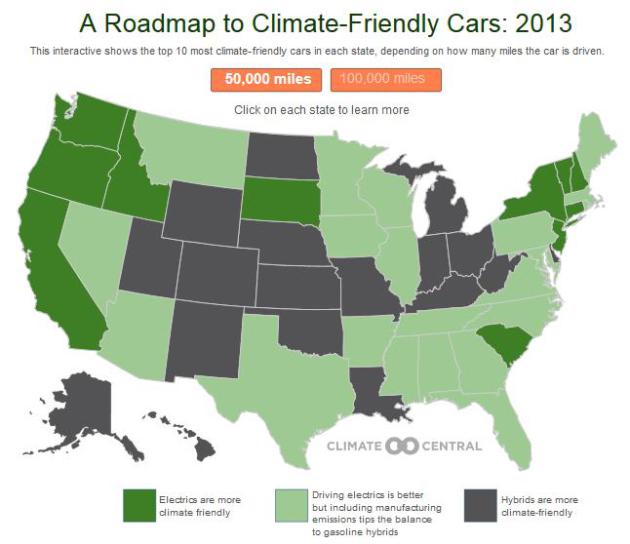
Hybrids Better For Climate Than Leaf, Tesla In Most States. I was surprised to see these results, courtesy of
Climate Central - here's the introduction: "
An
electric car is only as good for the climate as the electricity used
to power it. And in states that rely heavily on fossil fuels like coal
and natural gas for their electricity there are many conventional and
plug-in hybrid electric vehicles that are better for the climate than
all-electric cars. But that is just part of the story. Another
critical factor is the carbon emissions generated when a car is
manufactured. Emissions from producing the battery and other
electrical components create a 10,000 to 40,000-pound carbon debt for
electric cars that can only be overcome after tens, or even hundreds
of thousands of miles of driving and recharging from clean energy
sources..."
Graphic credit above: "
Electric cars are not always the
best cars for the climate. In most states, the emissions from charging
electric car batteries and the emissions generated while manufacturing
those batteries are large enough that some high-mileage,
gasoline-powered hybrid cars are more climate-friendly options thhan the
most efficient electric car."
A Growing Sense Of Urgency. Here's a clip of a
Huffington Post Op-Ed from Bill Richardson, former U.S. Energy Secretary, Governor of New Mexico and UN Ambassador: "
As I prepare to take part in an event
on hurricanes and extreme weather in Miami, Florida later today, it's
clear just how much climate change threatens the state's local
communities. Florida is the most vulnerable U.S. state to sea-level
rise, with seas projected to rise
along the state's coast by as much as 2 feet by 2060 -- threatening
valuable infrastructure, homes, and communities. Even Superstorm Sandy -
which had the greatest impacts in New York and New Jersey -- caused
significant damages along Florida's east coast while centered miles
offshore. Rising seas contributed to Sandy's storm surge and tidal
surges, causing flooding throughout Miami-Dade County and sweeping away
portions of State Road A1A in Fort Lauderdale. But as overly concerned
as I am of the climate change impacts Florida faces, I'm also
encouraged. Florida has something that few other states have: A
bipartisan collaboration to address global warming's disastrous impacts..."
Rebranding Climate Change As A Public Health Issue. I
think there is some obvious logic to this approach. Nobody wants
consistent bad news (without solutions to rectify the situation). And
I've noticed that my audiences tend to sit up a little straighter when I
pivot from statistics and science to health/safety/security impacts on
their kids and future grandkids. Here's a clip from
Time Magazine: "...
The
politicization of climate change — the never-ending debate over
whether it exists, for example, and the ensuing back-and-forth over its
causes, its implications and potential solutions — further discourages
the public from action. But what if climate change were instead about
an increase in childhood asthma, or a surge in infectious diseases,
or even an influx of heat-induced heart attacks? Would that hold more
resonance for the average citizen of the world? That’s what some
climate change experts are hoping, as they steer the conversation about
global warming toward the public health issues it raises. Last week, the journal Science featured a special issue on climate change and included a study on the complex yet growing connection between global warming and infectious diseases..."


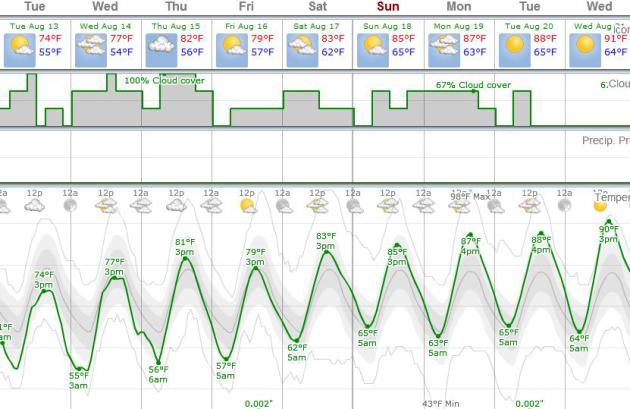





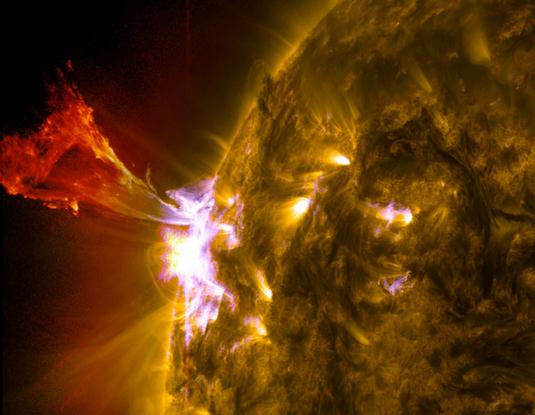
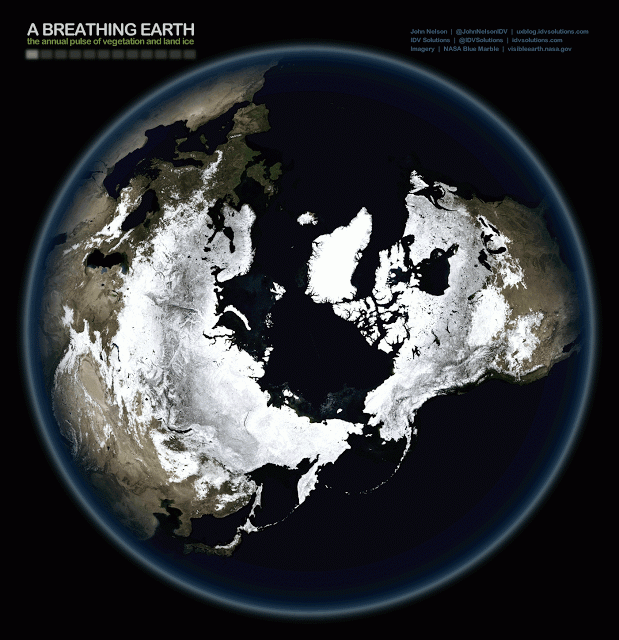

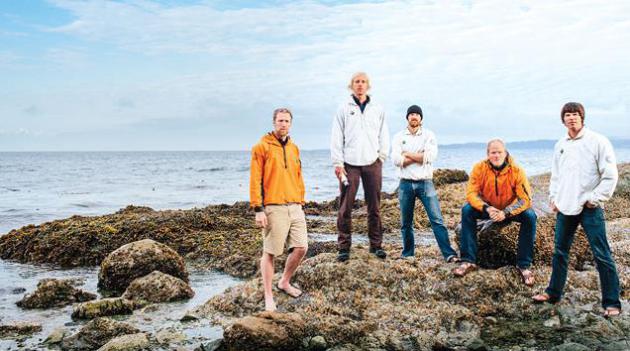


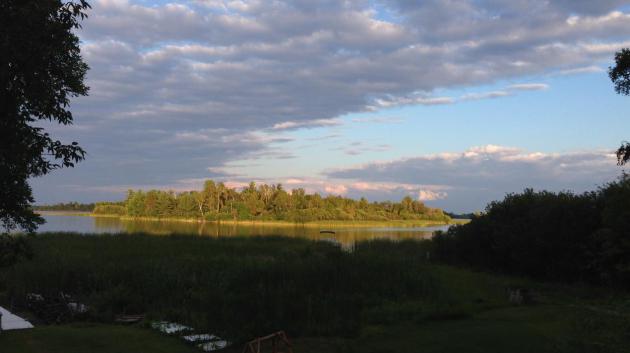
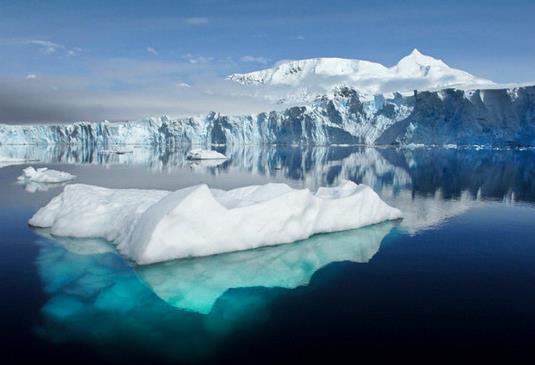
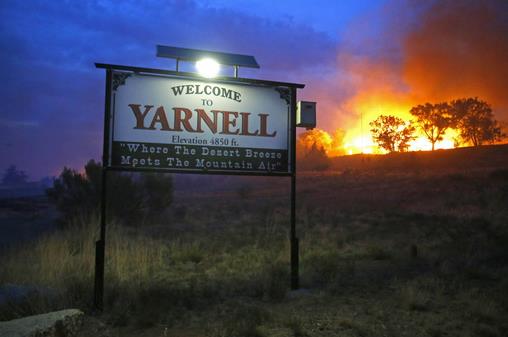
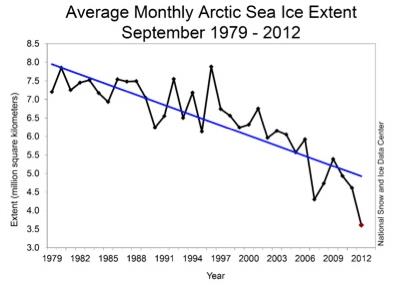
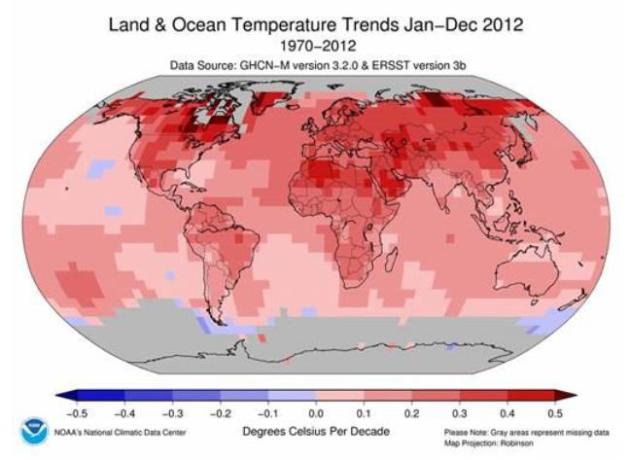
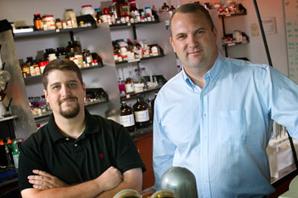

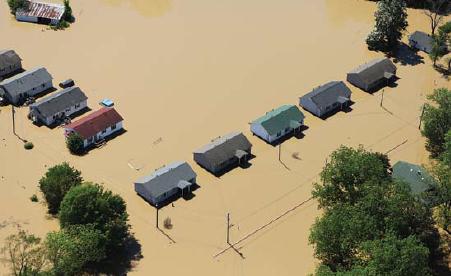


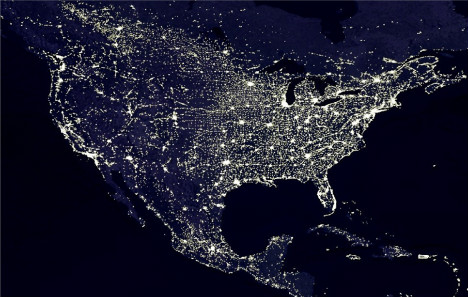
No comments:
Post a Comment